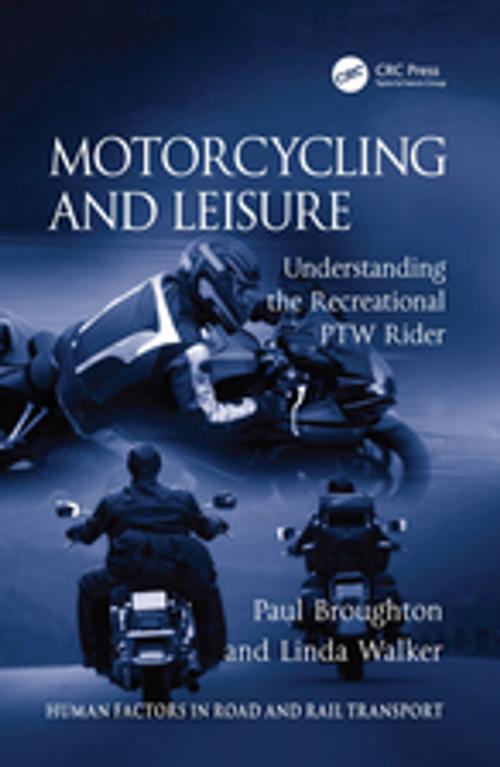Motorcycling and Leisure
Understanding the Recreational PTW Rider
Nonfiction, Health & Well Being, Psychology| Author: | Paul Broughton, Linda Walker | ISBN: | 9781351916639 |
| Publisher: | CRC Press | Publication: | December 5, 2016 |
| Imprint: | CRC Press | Language: | English |
| Author: | Paul Broughton, Linda Walker |
| ISBN: | 9781351916639 |
| Publisher: | CRC Press |
| Publication: | December 5, 2016 |
| Imprint: | CRC Press |
| Language: | English |
Despite the fact that there are around 1.2 million powered two wheelers (PTWs) within the United Kingdom, riders are often misconceived as living at the edge of society; however, this is often far from the truth. Riding a PTW is a high-risk activity and those who ride are often perceived as being 'risk junkies', but through an in-depth exploration of this leisure activity, Motorcycling and Leisure explains that riders ride because they enjoy it and do not necessarily enjoy the risk involved. The book presents a range of contemporary research on riders and how they find enjoyment. The book further explores the rider goal of enjoyment and utilises Fuller's task homeostasis theory along with Csikszentmihalyi's theory of flow to develop an understanding of the interaction between risk and goals. In conclusion it develops principles of interventions with the aim of guiding intervention design and reducing the number of motorcycle crashes.
Despite the fact that there are around 1.2 million powered two wheelers (PTWs) within the United Kingdom, riders are often misconceived as living at the edge of society; however, this is often far from the truth. Riding a PTW is a high-risk activity and those who ride are often perceived as being 'risk junkies', but through an in-depth exploration of this leisure activity, Motorcycling and Leisure explains that riders ride because they enjoy it and do not necessarily enjoy the risk involved. The book presents a range of contemporary research on riders and how they find enjoyment. The book further explores the rider goal of enjoyment and utilises Fuller's task homeostasis theory along with Csikszentmihalyi's theory of flow to develop an understanding of the interaction between risk and goals. In conclusion it develops principles of interventions with the aim of guiding intervention design and reducing the number of motorcycle crashes.















